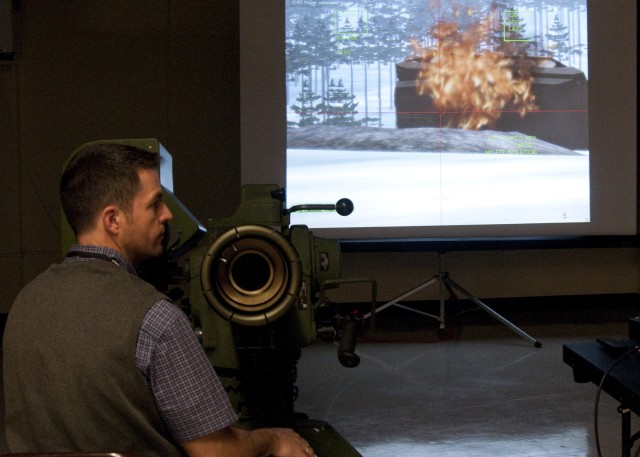FORT BRAGG, N.C. - Imagine a virtual system that would allow for multiple servicemembers to train on different weapon systems and scenarios at just a click of a button.
Well, it soon may be a reality for Soldiers around Fort Bragg and Armywide. On Jan. 26 and 27, the Mission Support Element G3 training, Counter Improvised Explosive Device and Asymmetrical Warfare Training Cell held a demonstration with computer software companies in hopes of integrating simulator equipment with virtual reality software.
The IED/AW training cell is committed to training, informing, and preparing senior leaders for deployment to combat zones. The cell informs leaders of current conditions in the country they are deploying to, what types of weapons they can come into contact with and how the weapons can be used against them. By focusing on what could happen while deployed, the cell also trains leaders on how to prevent future harm to them and their unit.
"We basically help senior commanders get an idea of what to expect out there as far as weapons, methods of attack, and any vulnerabilities or weaknesses ... and then we provide guidance and training," said John Pelikan, AW/IEDD training integrator. "There are so many new methods and equipment now that Soldiers and units can't keep up, so we help bridge the gap"
The training cell demonstrated that by using pre-existing equipment the military has and new software upgrades supplied by computer companies and integrating powerful missile simulation systems, Soldiers will not only get proper training on scarce and expensive weapons, they can engage in different scenarios they may encounter overseas.
The Battle Command Training Center, located on Fort Bragg, has already started implementing virtual reality that provides realistic training for servicemembers preparing for deployment and staying current with individual Soldier tasks. These home-station facilities are organized to provide on-demand training via battle command systems, simulations, virtual trainers and gaming systems.
Incorporating simulation systems with upgraded computer software, like Virtual Battlespace 2, Soldiers can be closely immersed into combat environments without leaving the safety of home.
According to the U.S. Army training web site, VBS2 allows "Soldiers to move in a shared, immersive, first person environment that supports mounted and dismounted operations. The system provides ground and air vehicles, small arms and vehicle mounted weapons, communications and interactive opposing forces of the contemporary operational environment, including improvised explosive devices.
Soldiers learn to anticipate and respond to tactical situations by practicing existing and developing tactics, techniques and procedures. Trainers and leaders use VBS2 to rehearse tactical missions and conduct after-action reviews of training sessions using easy-to-use, authoring tools integrated in the simulation (www.peostri.army.mil/PRODUCTS/VBS2/)."
"We are using this system to show what capabilities we can offer to senior leaders in training ... and then we push it to the limit to bridge the gap between Soldiers who have a shortfall in missile weapons system proficiency and being able to effectively employ them while in theater," said Pelikan.
Two of the weapon systems that were demonstrated last week were the Javelin missile launcher and the TOW, tube-launched, optically-tracked, wire, missile launcher. According to the AW/IEDD training cell, there aren't many training missiles to work with and with the large price tag on them, largely impacts Soldier training and familiarity on the weapon systems. By incorporating the simulator, it not only cuts back on costs, but also allows for Soldiers to train without wasting live ammunition.
"This allows Soldiers to be in a realistic, 3-D, detailed, immersive environment that can be rendered into different scenarios as needed," said Aaron White, AW/IEDD training integrator. "Feedback has been pretty good and actual gunners agreed that the simulator is close to actually handling and firing the missile - of course, with a few tweaks the software provides a realistic training opportunity."
According to the training cell, the simulation system in no way can replace live missile, fire and maneuver exercises, but it's a step in the right direction.
"Units don't know we exist," explained White. "Soldiers can come here to learn battle field strategies and asymmetrical warfare. They can call us with any questions dealing with training and even if we don't know the answer, we can network them to some who knows. We are here to improve training and better prepare Soldiers for combat."


Social Sharing